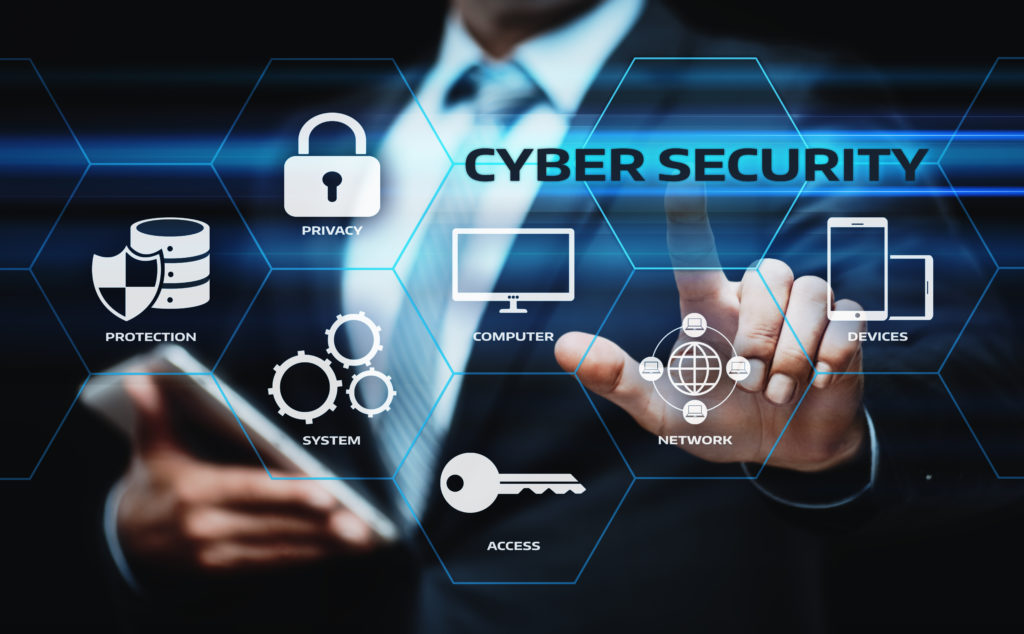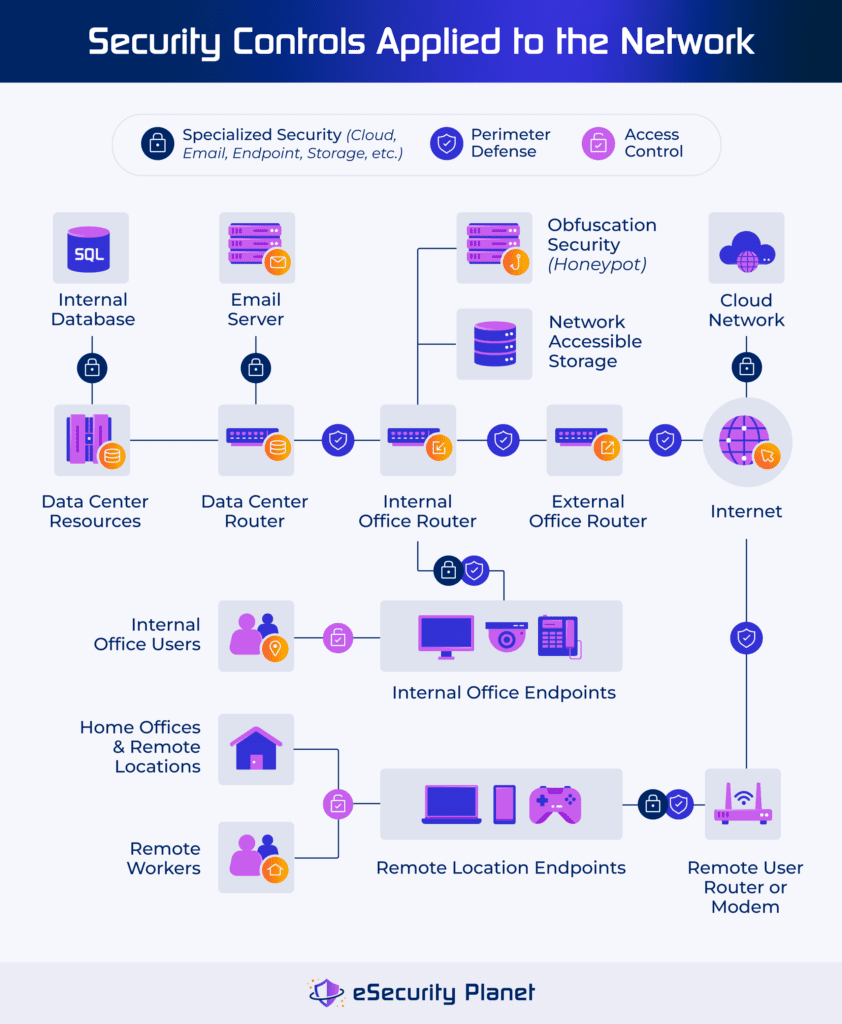Strengthen Your Defenses with Data Cyber Security Solutions for Better Protection
Strengthen Your Defenses with Data Cyber Security Solutions for Better Protection
Blog Article
Exactly How Data and Network Security Protects Versus Emerging Cyber Threats
In an era noted by the fast development of cyber threats, the importance of information and network protection has never been extra noticable. Organizations are progressively reliant on advanced safety and security measures such as security, gain access to controls, and proactive surveillance to protect their digital assets. As these hazards end up being more intricate, comprehending the interaction between data safety and network defenses is vital for mitigating threats. This discussion intends to discover the important components that strengthen an organization's cybersecurity pose and the strategies needed to remain ahead of possible vulnerabilities. What stays to be seen, however, is exactly how these actions will certainly develop in the face of future difficulties.
Recognizing Cyber Threats

The ever-evolving nature of innovation consistently introduces brand-new vulnerabilities, making it critical for stakeholders to remain vigilant. Individuals might unknowingly succumb social engineering techniques, where aggressors manipulate them right into divulging sensitive details. Organizations face distinct challenges, as cybercriminals often target them to make use of beneficial data or interrupt procedures.
In addition, the rise of the Web of Points (IoT) has broadened the assault surface area, as interconnected devices can function as entrance factors for assailants. Acknowledging the value of durable cybersecurity practices is essential for alleviating these dangers. By cultivating a comprehensive understanding of cyber risks, individuals and companies can execute efficient methods to secure their electronic properties, ensuring resilience in the face of an increasingly intricate hazard landscape.
Trick Elements of Information Protection
Making sure information safety and security calls for a multifaceted method that includes different essential components. One basic component is data encryption, which changes delicate info into an unreadable layout, obtainable just to accredited users with the proper decryption secrets. This acts as an essential line of protection against unapproved gain access to.
An additional crucial component is accessibility control, which controls who can view or control data. By implementing rigorous individual authentication procedures and role-based access controls, companies can lessen the danger of expert dangers and data violations.

Furthermore, data masking techniques can be employed to shield delicate info while still enabling for its use in non-production settings, such as screening and advancement. fft perimeter intrusion solutions.
Network Protection Methods
Carrying out robust network security approaches is necessary for protecting an organization's electronic facilities. These techniques involve a multi-layered strategy that includes both equipment and software application services made to shield the stability, confidentiality, and schedule of data.
One essential element of network security is the release of firewalls, which offer as a barrier in between trusted inner networks and untrusted outside networks. Firewall programs can be hardware-based, software-based, or a combination of both, and they aid filter outward bound and incoming web traffic based upon predefined safety regulations.
Furthermore, intrusion discovery and prevention systems (IDPS) play a crucial role in this checking network web traffic for suspicious activities. These systems can inform managers to potential breaches and do something about it to reduce dangers in real-time. Frequently patching and upgrading software program is also vital, as vulnerabilities can be made use of by cybercriminals.
Additionally, executing Virtual Private Networks (VPNs) makes certain secure remote gain access to, encrypting information sent over public networks. Segmenting networks can minimize the assault surface area and have potential breaches, limiting their impact on the overall infrastructure. By adopting these strategies, organizations can successfully fortify their networks against emerging cyber risks.
Finest Practices for Organizations
Establishing ideal techniques for organizations is essential in maintaining a Full Report strong security stance. A detailed method to data and network protection begins with normal risk analyses to determine vulnerabilities and possible risks.
In addition, constant employee training and understanding programs are essential. Staff members ought to be enlightened on recognizing phishing efforts, social engineering methods, and the significance of sticking to safety and security methods. Routine updates and spot administration for software and systems are likewise vital to secure against recognized vulnerabilities.
Organizations need to develop and check case reaction plans to make certain preparedness for prospective violations. This includes establishing clear interaction networks and roles during a security occurrence. Furthermore, data file encryption need to be employed both at rest and in transportation to protect delicate details.
Finally, performing routine audits and compliance checks will assist make sure adherence to well-known policies and pertinent laws - fft perimeter intrusion solutions. By complying with these finest methods, companies can substantially improve their durability versus emerging cyber dangers and secure their essential properties
Future Trends in Cybersecurity
As companies navigate an increasingly complex digital landscape, the future of cybersecurity is positioned to advance significantly, driven by arising modern technologies and changing threat paradigms. One noticeable fad is the assimilation of expert system (AI) and artificial intelligence (ML) right into safety frameworks, enabling real-time threat discovery and feedback automation. These innovations can assess substantial quantities of data to identify abnormalities and prospective breaches extra effectively than conventional methods.
Another essential fad is the increase of zero-trust architecture, which calls for constant verification of customer identities and device protection, no matter of their place. This approach decreases the danger of expert dangers and improves defense visit homepage against exterior strikes.
In addition, the enhancing adoption of cloud services requires durable cloud safety techniques that resolve distinct susceptabilities related to cloud settings. As remote job ends up being a permanent fixture, safeguarding endpoints will additionally become vital, resulting in a raised concentrate on endpoint discovery and response (EDR) services.
Last but not least, regulatory conformity will certainly continue to shape cybersecurity techniques, pressing organizations to embrace extra strict information defense steps. Accepting these fads will be vital for organizations to fortify their defenses and navigate the progressing landscape of cyber threats successfully.
Final Thought
In conclusion, the application of robust information and network protection procedures is vital for organizations to guard versus emerging cyber hazards. By making use of file encryption, access control, and reliable network safety techniques, companies can substantially reduce susceptabilities and safeguard delicate info.
In an era noted by the rapid development of cyber threats, the value of data and network protection has never ever been much more obvious. As these risks come to be much more intricate, understanding the interaction in between data safety and security and network defenses is important for minimizing risks. Cyber risks encompass a wide array of harmful activities intended at compromising the discretion, honesty, and accessibility of information and networks. An extensive strategy to data and network safety starts with regular danger analyses to identify vulnerabilities and prospective hazards.In conclusion, the implementation of robust information and network safety and security procedures is essential for organizations to secure versus arising cyber hazards.
Report this page